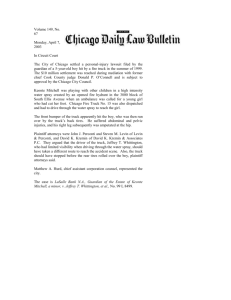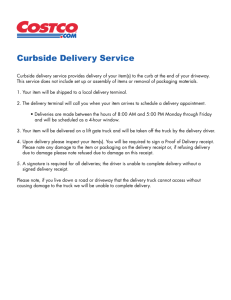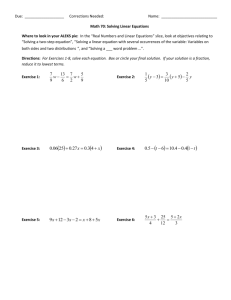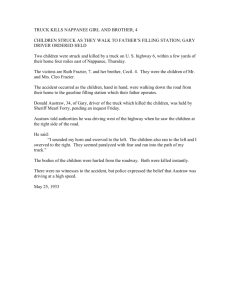4-Driving-with-Large-Trucks-Post-Test-MC-Ans
advertisement
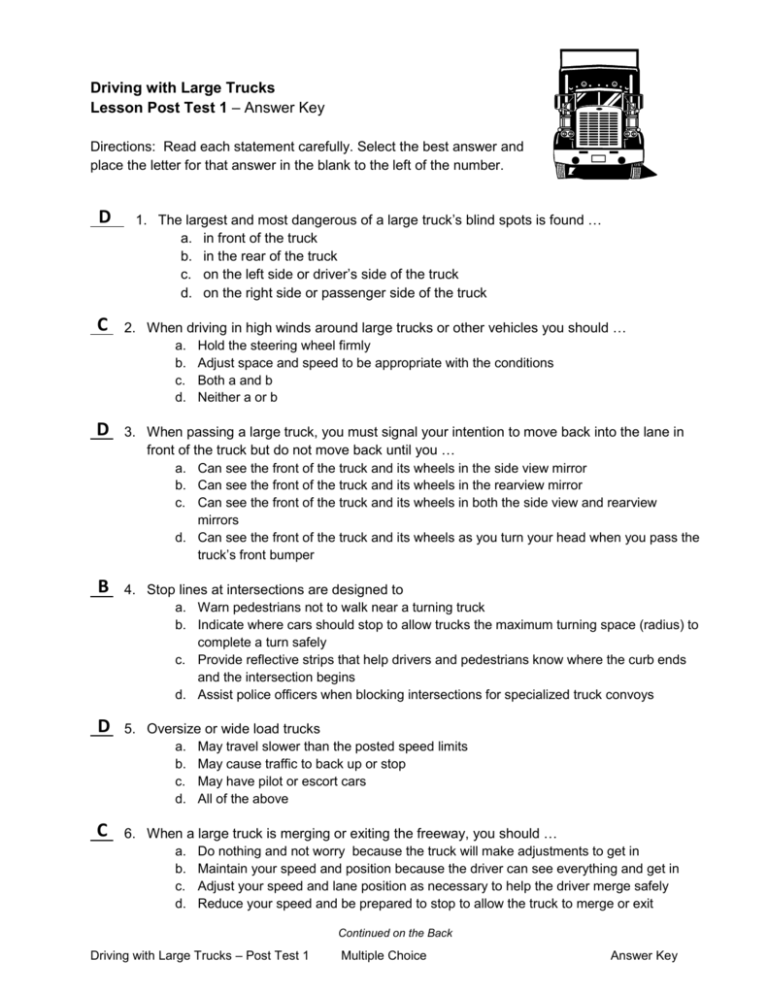
Driving with Large Trucks Lesson Post Test 1 – Answer Key Directions: Read each statement carefully. Select the best answer and place the letter for that answer in the blank to the left of the number. D 1. The largest and most dangerous of a large truck’s blind spots is found … a. in front of the truck b. in the rear of the truck c. on the left side or driver’s side of the truck d. on the right side or passenger side of the truck C 2. When driving in high winds around large trucks or other vehicles you should … a. Hold the steering wheel firmly b. Adjust space and speed to be appropriate with the conditions c. Both a and b d. Neither a or b D 3. When passing a large truck, you must signal your intention to move back into the lane in front of the truck but do not move back until you … a. Can see the front of the truck and its wheels in the side view mirror b. Can see the front of the truck and its wheels in the rearview mirror c. Can see the front of the truck and its wheels in both the side view and rearview mirrors d. Can see the front of the truck and its wheels as you turn your head when you pass the truck’s front bumper B 4. Stop lines at intersections are designed to a. Warn pedestrians not to walk near a turning truck b. Indicate where cars should stop to allow trucks the maximum turning space (radius) to complete a turn safely c. Provide reflective strips that help drivers and pedestrians know where the curb ends and the intersection begins d. Assist police officers when blocking intersections for specialized truck convoys D 5. Oversize or wide load trucks a. May travel slower than the posted speed limits b. May cause traffic to back up or stop c. May have pilot or escort cars d. All of the above C 6. When a large truck is merging or exiting the freeway, you should … a. Do nothing and not worry because the truck will make adjustments to get in b. Maintain your speed and position because the driver can see everything and get in c. Adjust your speed and lane position as necessary to help the driver merge safely d. Reduce your speed and be prepared to stop to allow the truck to merge or exit Continued on the Back Driving with Large Trucks – Post Test 1 Multiple Choice Answer Key A 7. When traveling behind a large truck, to help the driver know that you are there, the best rule to follow is to … a. Maintain a distance where you can see the trucks side mirrors while traveling behind the truck b. Continuously flash your headlights while traveling behind the truck c. Move from the center area behind the truck to the left side of the travel lane so you keep peeking out from behind the truck d. Honk your horn and turn on your emergency flashers until you decide to pass the truck A 8. When traveling behind or beside a loaded flat bed truck, you should … a. Allow enough space to react and avoid objects that may spill onto the roadway b. Not worry because the load is always strapped or tied down c. Turn on your hazard warning lights to warn other drivers d. You should lightly step on your brakes every 5 miles to test them just in case there is an emergency involving the flat bed truck C 9. Tanker trucks should be considered dangerous anytime but especially when a. Liquid loads shift (sloshing) causing the center of gravity in the tanker truck to shift so far that it results in a rollover b. Sudden stops caused by other vehicles “cutting in” the truck’s safety space gap may result in the liquid inside the tank rolling from front to back (surging) c. Both a and b d. Neither a or b because the driver is a professional trained to counter act these problems D C 10. When a large truck is turning right or left, you should … a. Do nothing and not worry because the driver is trained to make those big turns b. Watch those right turns because only on a right turn might the truck swing into your lane to complete the turn c. Adjust your lane position to match the rear of the truck’s trailer d. Watch both right and left turns because the truck will often swing wide to make and complete any turn B C 11. While it takes a car going 55 miles per hour about 265 feet to stop, the distance it would take a fully loaded tractor trailer truck to come to a complete stop when going 55 miles per hour is … a. 5 city blocks b. Just over the length of a football field c. The height of the Washington Monument d. The straight line distance from home plate to second base Driving with Large Trucks – Post Test 1 Multiple Choice Answer Key




